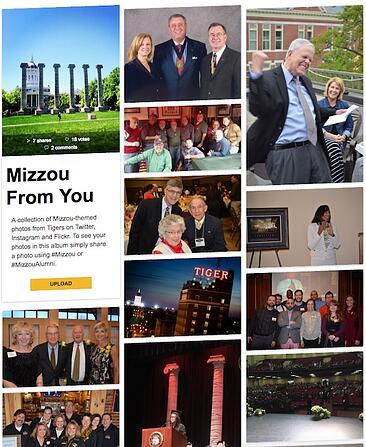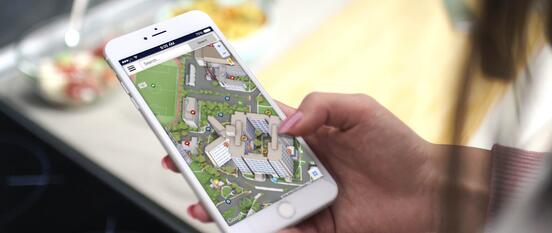Safe to say, methods for attracting students have been modernizing for years. Virtual reality plays a part, as does social media and the ability for students to connect and converse directly with a school and fellow students. In this post we’ll discuss some of these new recruiting technologies, including the potential of 3D virtual tour software, which is our forte here at CampusBird.
First Impressions Count
While students still want to visit in-person to get a feel for campus and student life, a majority of their research and first impressions about your school take place online. Why do some students contact you, while others do not? What piques their interest? Students are doing a lot of research, and they are applying to more schools than in previous years.
At CampusBird, we offer 3D virtual tour software and interactive maps in one integrated package. So sure, we’re bias! We know these tools can make a big difference in getting students excited about your school. But don’t just take it from us:
“64 percent of students use virtual tours and a whopping 67 percent use campus maps.” – mStoner, Mythbusting Websites Report, 2016
You know how important it is to keep your school top of mind, so let’s take a look at three big tech factors:
Social Media
Social media isn’t going anywhere. While preferences may change, social media will only continue integrating into our lives. For college recruiters, this is great news: as the leading networks evolve, the ability to creatively reach and impact prospective students should continue to increase. The importance of a prominent, professional, and consistently growing social media presence has never been greater. Take a look at these top schools and how they use social platforms to reach, engage with, and attract top students.

While students may follow a school’s social media channels, chances are they’ll be more interested in what current students and other prospective students are saying online. Setting up a strong user-generated content program can make a big difference, and many schools have found success in deputizing students to serve as official ambassadors. Learn more about how universities are finding success with user-generated content.
3D Virtual Tour Software
Virtual tour software gives both students and families the ability to learn a campus from the comfort of their home. Modern software for virtual tours makes every part of a student’s application process easier. For example:
Back to the first impression. What greets a first-time visitor to your website? Does it draw them in and make them want to learn more? Make it easy to connect, ask questions and find information? Most if not all students will already have a shortlist of schools and may be looking for specific information about academics, athletics, the area surrounding the campus and/or student life. 3D virtual tour software can guide them through this, but only if it’s flexible and allows the student to move around and select locations / topics that interest them.
Familiarization and relate-ability. Many hospitals and medical campuses use interactive maps and 3D virtual tour software. Why? Wayfinding plays a big part. But it’s also important that patients (and new staff) are as comfortable as possible when they arrive. The same idea applies to new students – being able to familiarize themselves with campus before they arrive is immensely valuable. It’s no coincidence that move-in day mornings see some of the biggest spikes in web and mobile traffic to the CampusBird platform. Students and parents are able to log on and quickly find parking near a dorm, information, and lunch! The simple fact is that going away to college is equivalent to finding a new home. The perils of homesickness and culture shock affect more than 66% of college students. Helping these students feel familiar and welcome in the campus environment, and the surrounding neighborhood/town, does wonders for their confidence in selecting a school and succeeding once they get there.

Family support and increased levels of comfort. For many prospective students, identifying a school where they will be near activities and social needs they prefer, and have family support in their college decision plays a big role in how comfortable they are with choosing a school. 3D virtual tour software allows a student and their family to learn their way around campus and the surrounding area prior to arrival, and also to get excited about visiting specific areas and places of interest.
Apps and online communications tools
No longer is the college selection process confined to places a student follows, knows people at, or has even heard much about. Modern services such as ApplyKit use an algorithm to poll a high school student’s interests, personality, and what they are looking for from a school, and return matches based on the student’s responses. Additionally, many schools are finding success with integrated mobile platforms like Modo Labs’s Kurogo platform.

Face-to-face meetings with recruiters or professors are also taking place on the web. Skype and other communication tools allow students to meet virtually with admissions professionals that they were unable to schedule an in-person meeting with during a tour, and in some cases, skip the tour altogether. This is particularly helpful with prospective graduate students wishing to speak directly with a professor or student within a specific cohort or program. From anywhere in the world, a level of personal interaction can take place that may increase the appeal of a school that otherwise would have been on the backburner.
Wrap Up
For recruitment offices, the beauty of modern tech advances lies in the fact that the playing field is leveled to a point it never could be before. Smaller schools can arrange meetings with students on the other side of the country, and provide them with a campus tour and level of personalization not previously possible. For colleges and universities that take full advantage of technology to increase their reach, the appeal to a wider audience of prospective students and the opportunity to increase applications and enrollment are virtually limitless. From social media to apps and 3D virtual tour software, the potential to meet and engage with students is huge.
Interested in learning more? Have a look at our Xplorer Virtual Tour system, which uses 360-degree photos and video to profile your campus, all tied into the CampusBird interactive campus map platform.

